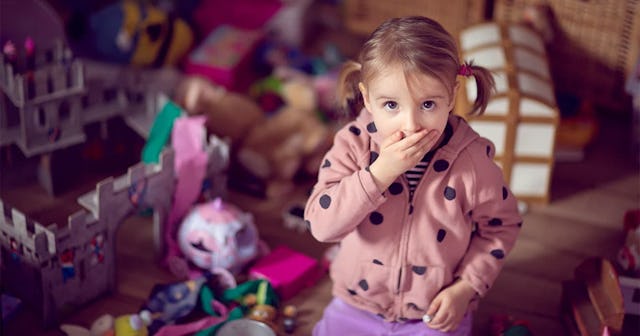Just Stop Buying So Much Stuff, Folks

Way back in what feels like another lifetime — otherwise known as pre-kids life – I had these little things called “disposable income” and “free time.” I had the time and money to buy shoes because they were cute. I bought copious amounts of makeup and trinkets. And once I even splurged on a tiny Prada bag. Granted it was teeny-tiny, but it was a Prada bag nonetheless.
Fast forward 10-15 years, I can say with certainty that there is much about my pre-kids life that is unrecognizable, but it’s my spending habits that are the most unrecognizable – and it isn’t just because kids cost the proverbial arm and leg (because they do). In fact, my spending habits from a decade or so ago aren’t just unrecognizable to me, but I’m also kind of embarrassed of them. Ashamed even.
Because what I didn’t realize (or admittedly, care enough about) back then was just how much my spending habits were killing the environment. Yes, killing.
Lucrezia Carnelos/Unsplash
Experts have long warned that our excessive consumption – not just of plastics, but of fabrics and other materials too – are causing an environmental Armageddon. As explained in this article, since 1950, we have manufactured around 8.3 billion tons of plastic — over half of which ends up in landfills, 9% gets recycled, and the rest goes into the ocean where it kills animals and destroys entire ecosystems.
One of the worst things we are doing for the planet? Buying all that stuff.
Over the past 40-something years, homes in America have increased in size by more than 1,000 square feet. Meanwhile, the average household size has shrunk such that the average living space per person has nearly doubled. And what do we do with all that space? Fill it with more stuff, of course!
Americans today own 3 times as many clothes as we did in 1930, and that’s even taking into account that the average American throws away 65 pounds of clothes every year. 65 POUNDS! Only 3% of the world’s children live in the U.S. but our kids own 40% of the toys. Yikes.
Sure, we might tell ourselves that we’re doing good by donating our discards after a KonMari-esque purge. Believe me, I sure do. Unfortunately, that isn’t a cure-all to the problem. Neither is recycling.
“Your average thrift store in the United States only sells about one-third of the stuff that ends up on its shelves,” author Adam Minter told NPR. “The rest of the stuff ends up somewhere else.” Minter’s latest book, Secondhand, takes a closer look at the life – and death – of our donated clothes and electronics.
Negative Space/Getty
Recycling helps, but it still brings its own set of problems. America lacks the infrastructure to adequately deal with its recycling needs, and in some cases, the emissions created by the recycling process are harmful to the environment.
“The one thing we do know is that the biggest impact of most products is the manufacturing side. So if you want to reduce the environmental impact of your consumption, the best way to do that is to not manufacture more stuff. In that sense, the best thing you can do is not buy more stuff.”
Let me repeat that: THE BEST THING YOU CAN DO IS NOT BUY MORE STUFF.
The goal, Minter says, is to use a product – whether it’s a smartphone or a pair of jeans or a dishware set – as long as you can. Fix it. Mend it. Make do for a while longer.
Of course, this goes against the grain in our bigger-better-more society. It can seem almost counter-cultural to not upgrade when you can. But just because you can afford to buy something doesn’t mean you should.
Sarah Pflug/Burst
While I’m not proud of my over-consumption in the past, it’s as Maya Angelou said: When you know better, you do better. And believe me, I’m trying to do better. Last year, we were in the market for a new vehicle, and could have made it fit in our budget, but we decided to stick with our one beaten-up, ten-year-old minivan. My winter coat is about seven years old, with tiny holes and stuffing that occasionally escapes. Our “starter home” turned out to be the most expensive home we ever owned because we realized we didn’t need that much after all. We’ve been downsizing before we needed to.
I don’t say all of this to pat myself on the back. In fact, there are plenty of ways I could do better. I could shop at second-hand stores more than buying new products. I could take better care of the things I do have so they last longer. And lord knows, our family uses way too much plastic. Way. Too. Much.
But here’s the thing: we all can do something. We all need to find that line where we are comfortable in the knowledge that we are doing our part. I’m not completely there yet, but I’m moving ever closer.
Some things are easier than others, of course. For me, clutter is a massive anxiety trigger so I thrive with fewer clothes and belongings in general. I don’t enjoy shopping, and I’m kind of lazy, so I don’t like having a lot of space or stuff to take care of. On the other hand, I often resort to convenience products (see previous comment about being lazy), which can be wasteful and not all that eco-friendly. I’m working on it.
That’s all any of us can do, I suppose: Work on it. We can be aware and make intentional choices about our consumption. When we buy something, we can ask whether the cost is worth it – both the financial cost and the environmental costs. We can make better decisions.
What we do matters. After all, as Minter says, “There is no green heaven.”
This article was originally published on